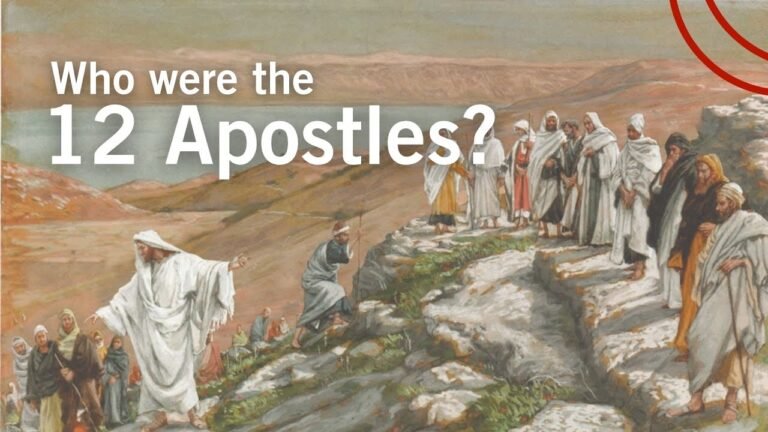Unveiling Golgotha: The Significance of Calvary Hill
Golgotha, often referred to as Calvary Hill, stands as a profound symbol of sacrifice and redemption in Christian tradition. Nestled outside the walls of ancient Jerusalem, this rocky outcrop is the site where Jesus was crucified, forever marking it as a pivotal location in the narrative of faith. Its name, translating to place of the skull, evokes a sense of solemnity and reflection, drawing pilgrims and historians alike to explore its enduring significance. As we delve into the history and legacy of Golgotha, we uncover the layers of meaning that continue to resonate through the ages.
Are Calvary and Golgotha the same location?
Calvary and Golgotha refer to the same location, the site just outside the walls of Jerusalem where Jesus was crucified, as recounted in the four canonical gospels. Known in Latin as Calvariae, this significant spot has been steeped in religious importance for centuries, marking a pivotal moment in Christian history.
Since the early medieval period, Calvary has attracted countless pilgrims seeking to connect with the sacred events that unfolded there. Its enduring legacy as a place of reflection and reverence continues to draw visitors from around the globe, who come to honor the profound significance of this hallowed ground.
What is the current location of Golgotha Hill?
Golgotha Hill, known as the site of the crucifixion of Jesus, remains a focal point of debate among historians and archaeologists. While its exact location is shrouded in uncertainty, two primary sites have emerged as contenders for its identity. The Church of the Holy Sepulchre, located within the Old City of Jerusalem, is traditionally venerated as the sacred site, drawing countless pilgrims and tourists eager to connect with history.
Alternatively, some scholars advocate for a less recognized site known as Gordon’s Calvary, situated just north of the Damascus Gate. This location offers a distinct topography that some argue aligns better with historical accounts. Regardless of the specific site, both locations hold significant cultural and religious importance, inviting exploration and reflection on the profound events that unfolded there centuries ago.
Is the Hill of Calvary still present today?
The Hill of Calvary, known as Golgotha, holds profound significance in Christian tradition as the site of Christ’s crucifixion. While the passage of nearly 2,000 years has transformed its landscape, the essence of Golgotha remains integral to the faith. Today, it is nestled within the Holy Sepulchre Church, a revered pilgrimage destination for millions.
In the 4th century, the establishment of the Holy Sepulchre Church marked a pivotal moment in religious history, encapsulating the site of Golgotha within its sacred walls. This transformation has allowed believers to connect with their spiritual heritage while offering a tangible space for reflection and reverence. The church itself houses numerous chapels, each echoing the stories and significance of the events that unfolded there.
Though the physical hill may have diminished in stature, the spiritual resonance of Golgotha endures. Visitors to the Holy Sepulchre Church can still experience a profound sense of history and faith, standing where countless souls have sought solace and meaning. Thus, while the landscape has evolved, the legacy of Calvary continues to inspire and unite believers across generations.
Discovering the Spiritual Legacy of Calvary
Calvary stands as a powerful symbol of sacrifice and redemption in the spiritual landscape of humanity. Its legacy is woven into the fabric of countless faiths and traditions, serving as a reminder of the transformative power of love and forgiveness. As we explore this sacred site, we uncover layers of meaning that resonate deeply within our souls, inviting us to reflect on our own journeys of faith and the sacrifices we make for others.
The history of Calvary is rich with stories of hope and resilience, drawing pilgrims and seekers from around the globe. Each visitor contributes to a living tapestry of experiences, sharing in the profound sense of connection that transcends time and culture. This shared pilgrimage fosters an environment where individuals can confront their struggles, seek solace, and find strength in unity, reinforcing the idea that spirituality thrives in community.
Ultimately, the spiritual legacy of Calvary challenges us to embrace our own paths with courage and compassion. It calls us to honor the sacrifices made by those who came before us and to carry their lessons forward into our daily lives. As we engage with this sacred space, we are reminded that our journeys, marked by both trials and triumphs, can lead us to a deeper understanding of our purpose and the interconnectedness of all living beings.
A Journey Through History and Faith
Throughout the ages, humanity has embarked on a remarkable journey that intertwines history and faith, shaping cultures and identities across the globe. From ancient civilizations that built monumental structures to honor their deities, to the rise of major religions that have guided moral compasses, the interplay of belief and historical events has been profound. These narratives serve as a testament to the resilience of the human spirit, as communities come together to preserve their traditions and stories through generations.
As we delve into this rich tapestry, we encounter pivotal moments that have defined epochs and transformed societies. The emergence of philosophical thought in the East and West, the spread of religious doctrines, and the impact of pivotal historical figures have left indelible marks on the world. Each event, whether a monumental triumph or a devastating loss, has contributed to the collective understanding of faith and its role in shaping human experience.
Today, this journey continues as we navigate the complexities of modern life, where faith still plays a vital role in providing solace and direction. With the rise of interfaith dialogue and a greater appreciation for diverse beliefs, there is an opportunity to reflect on shared values and aspirations. By acknowledging our intertwined past, we can foster a sense of unity that transcends boundaries, celebrating the rich mosaic of faith that continues to inspire and uplift us all.
The Pivotal Moments of Golgotha Revealed
At Golgotha, a site steeped in profound significance, the convergence of humanity’s darkest moments and the promise of redemption unfolded. This desolate hill, often associated with suffering, became the backdrop for a transformative narrative that transcends time. Here, the crucifixion of Jesus marked not just the culmination of a tragic fate but the initiation of a powerful message of hope and forgiveness. The events that transpired were not merely about despair; they sparked a profound awakening, inviting generations to reflect on the meaning of sacrifice and love.
As the earth trembled and the sky darkened, the pivotal moments at Golgotha echoed through history, reshaping the spiritual landscape of the world. Witnesses to this extraordinary event were left grappling with the implications of what they saw—an unparalleled act of compassion that challenged societal norms and redefined the essence of faith. The legacy of Golgotha is one of resilience, urging individuals to seek understanding and connection in the face of adversity, reminding us all that even in our most challenging times, the light of hope can emerge from the shadows.
Understanding the Impact of Calvary on Christianity
The crucifixion of Jesus at Calvary stands as a pivotal event in Christian theology, fundamentally shaping the beliefs and practices of the faith. This moment is not merely a historical occurrence; it is viewed as the ultimate sacrifice for humanity’s sins, establishing a profound connection between God and believers. The act of selflessness exhibited on the cross serves as a powerful symbol of love, forgiveness, and redemption, reinforcing the notion that through suffering, spiritual renewal can be achieved.
The significance of Calvary extends beyond the event itself, influencing Christian liturgy, art, and community rituals. Churches around the world commemorate Good Friday, reflecting on the depth of Christ’s suffering and its implications for human existence. Artistic expressions, from paintings to music, often depict the crucifixion, serving to remind followers of the core tenets of their faith. This continuous engagement with the narrative of Calvary fosters a collective memory, uniting believers in their shared understanding of sacrifice and salvation.
Moreover, the teachings derived from Calvary encourage Christians to embody the principles of compassion and altruism in their daily lives. The message of taking up one’s cross resonates deeply, inspiring individuals to confront personal challenges with grace and resilience. As believers strive to mirror the self-giving love exemplified by Christ, the legacy of Calvary becomes a guiding force, shaping not only personal faith journeys but also the broader ethical framework within which Christian communities operate.
Golgotha, or Calvary Hill, stands as a poignant symbol of sacrifice and redemption, inviting reflection on its profound historical and spiritual significance. As a site of pivotal events, it continues to resonate with countless individuals seeking meaning and hope. Whether viewed through the lens of faith, history, or personal journey, Golgotha remains a powerful testament to the enduring impact of love and forgiveness in the human experience.







